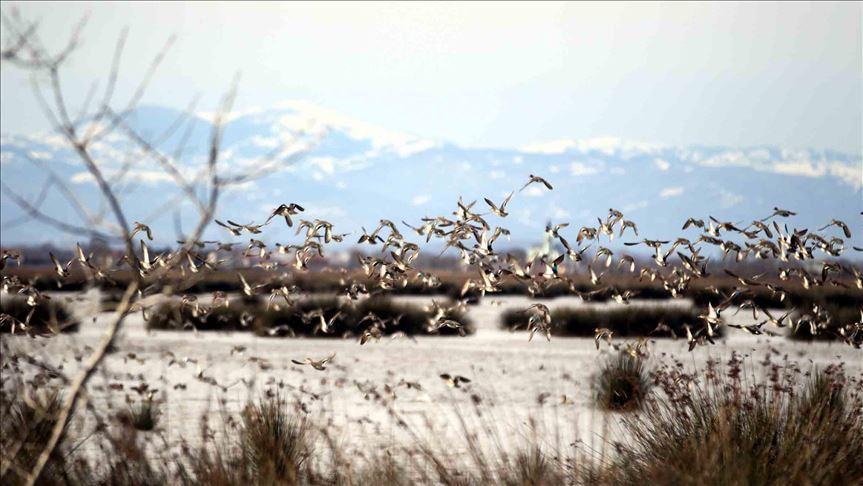
Migratory birds are benefitting from measures taken against the novel coronavirus in Turkey as they continue to migrate from the south to the north, one expert told Anadolu Agency.
"I think that migratory birds are more comfortable due to less human pressure on their rest areas since people go out less at the moment,” said Can Yeniyurt, flyways officer at the Izmir-based Doğa Association, a nature conservatory group and partner of BirdLife International. “They are also positively affected by the decline in the number of [airplane] flights.”
On the first leg of the migration in 2020, Yeniyurt said the journey allows Turks to have an opportunity to view a large number of birds from the comfort of home during the COVID-19 lockdown, thanks to the country's geographical location.
"We can witness this magnificent bird migration journey by looking at the sky from the windows, balcony, terrace, or garden of our homes. It can also be registered in eBird to make a contribution to environmental conservation works," he said of the online database of bird observations that provide scientists, researchers and naturalists with real-time data about bird distribution.
The stork, Egyptian vulture, lesser spotted eagle and hawk, short-toed eagle and sparrow hawk are some important species that cross Turkey to reach Europe.
"Poaching is one of the major threats to migratory birds on the migration routes, it is made seriously in [southern] Hatay province in Turkey," he said, noting the short-toed eagle, honey buzzard and hawk are predators that mostly poach in the province.
The destruction of resting and feeding areas put migration at risk, he said. Electrocution causes a lot bird deaths, especially to storks.
He added that Istanbul Strait, East Black Sea Mountains and Amanos Mountains are the three important locations for soaring birds in Turkey.
The return journey from north to south can be observed in August, September and October.